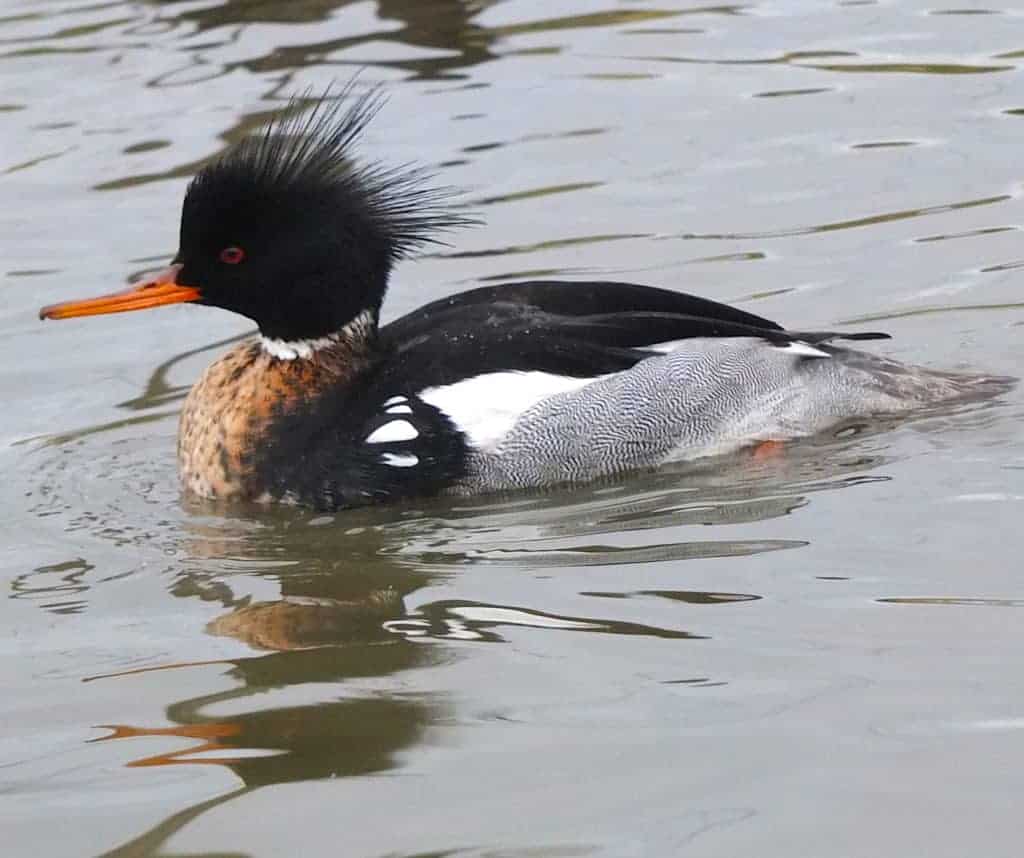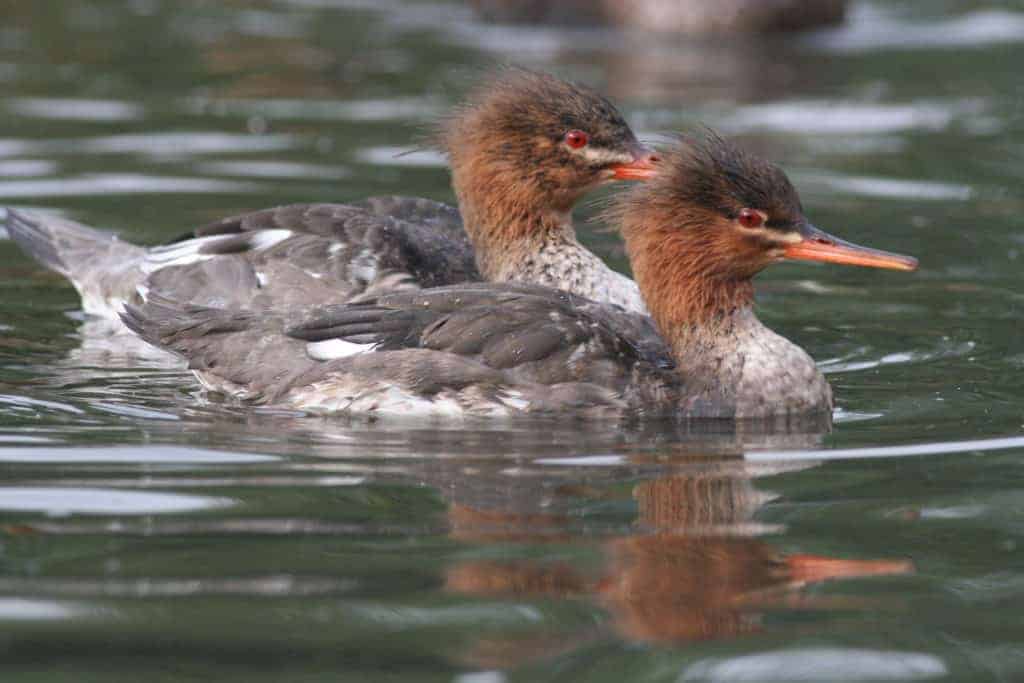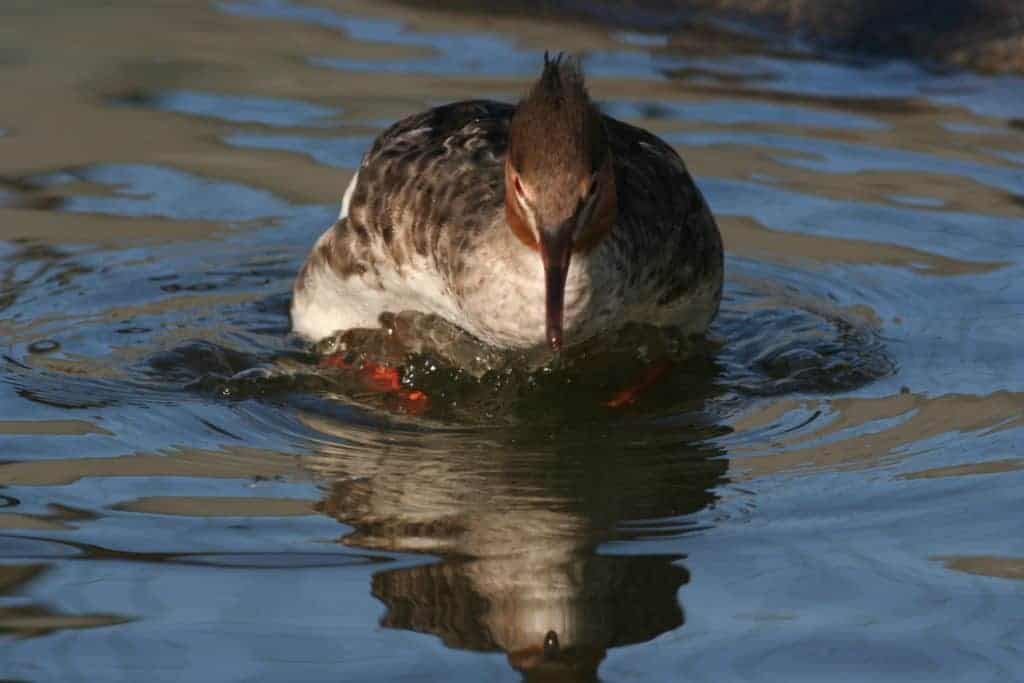Red-breasted Merganser

Red-breasted Mergansers are reasonably scarce in collections. They persistently pick up hard material like sticks and can choke, so enclosures must be scrupulously tidy.

Mergus serrator
Like its larger cousin the Common Merganser, the Red-breasted Merganser is a widespread bird throughout the northern hemisphere, and the range of the two species overlaps widely. Unlike the Common Merganser, which prefers fresh water, the Red-breasted Merganser likes salt water, and is typically found in shallow tidal waters where it dives for fish. Many birds stay on the coast to breed, while others come inland to freshwater lakes and rivers.
Though a relatively silent species, the drakes have a flamboyant display. Courtship and pair formation start in mid-winter and becomes intense as spring migration starts. The flight is fast and direct. Both sexes have spikey crests; in eclipse the drake resembles the duck, but retains the distinctive white wing coverts.

To identify the wild sawbills found in the UK, there is a useful article on Birdguides.
Red-breasted Mergansers require clean water and a high-protein fish-based diet. Nest boxes will encourage them to breed. They like to lay their clutch of 9–10 buff eggs close to water. Incubation is for 29 to 35 days.
Share this page